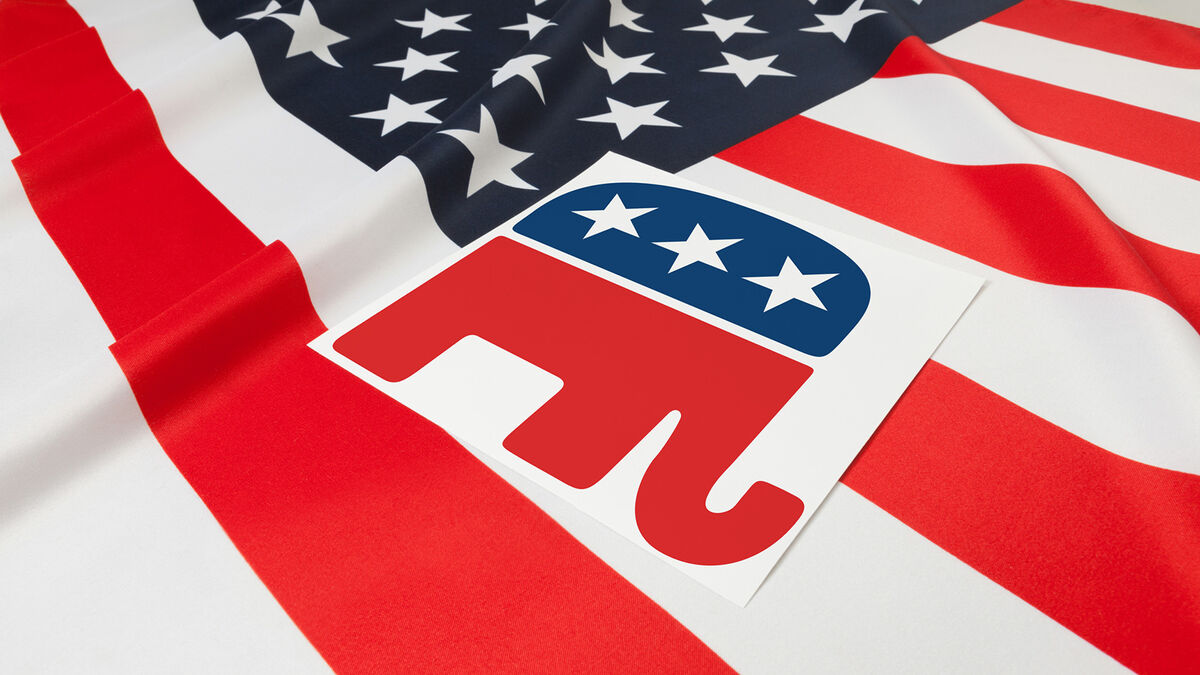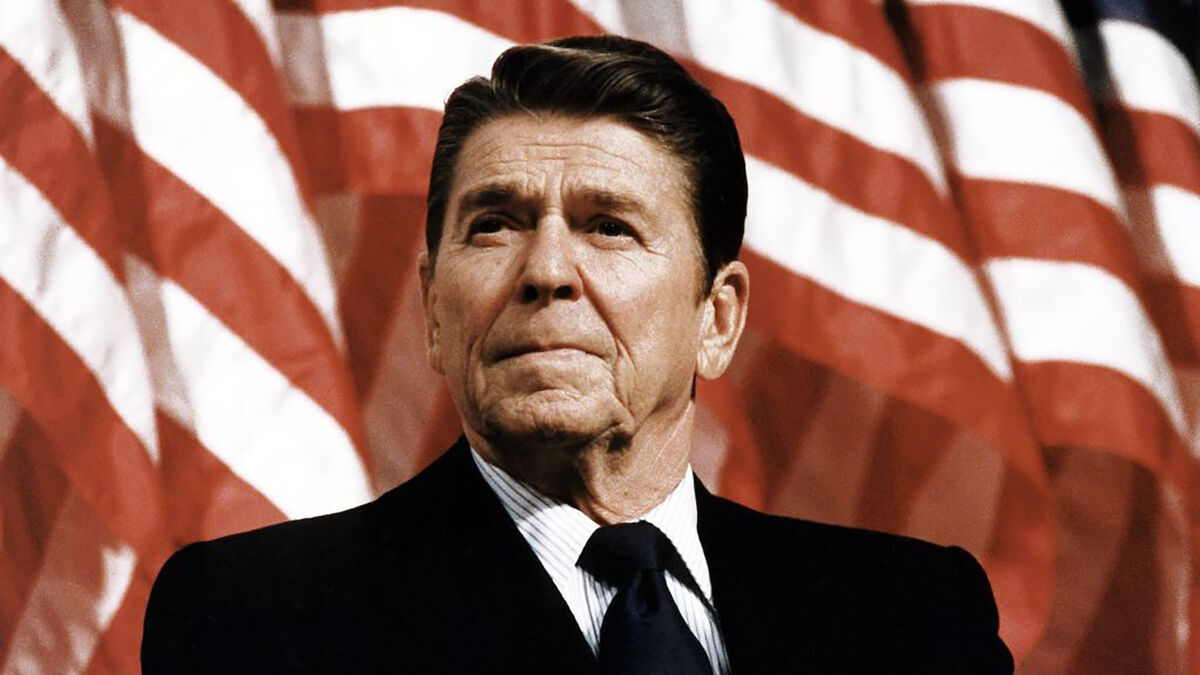
Have you ever wondered what GOP stands for in politics? The answer is in United States history, and it can help you understand a lot more about modern political arguments. Keep reading to learn the meaning of GOP and its history in the United States.
What Does GOP Stand For?
GOP stands for “Grand Old Party,” a nickname of the modern Republican party. Both this term and “gallant old party” were used in the Congressional Record and various newspaper publications in the 1870s. They reference the Republican party’s role in the American Civil War and keeping the country unified.
GOP Mascot and Symbols
The mascot of the GOP is an elephant, which had its origins in an 1874 Harper’s Weekly political cartoon by Thomas Nast. The elephant is often contrasted with the Democratic party’s mascot – a donkey – which also originated in the same political cartoon.
Other GOP symbols include:
- A log cabin for the birthplace of Abraham Lincoln (the first Republican president)
- A bald eagle for America’s national bird
- The color red (the Democratic party is associated with the color blue)
History of the GOP
The history of the Republican party goes back to the issue of slavery. Prior to the mid-19th century, the major U.S. political parties had been the Democratic party and the Whig party (and before that, the Federalists and the Democratic-Republicans, the latter of whom split into Democratic/Whig factions in 1828). When the Whig party fell apart over slavery, that was the birth of the GOP – but only the beginning.
Pre-Civil War
The Republican party was formed as a reaction to the expansion of slavery in the United States, namely through the Kansas-Nebraska Act (which effectively repealed the Missouri Compromise). Original members of the Republican party staunchly opposed slavery and favored economic reform. It rivaled the Democratic party, the oldest political party in the United States, which supported state sovereignty and expanding slavery.
The First Republican President
Abraham Lincoln was elected as the first Republican president in 1860. With his election came Republican control in the House of Representatives and Congress, which was vital during the Civil War in 1861. Lincoln oversaw the Union victory in 1865 and the 13th amendment to the United States Constitution, which abolished slavery on American soil.
The Next Republican Presidents
From the period of 1860 - 1932, the (now-nicknamed) GOP was politically successful. They elected 13 presidential administrations during this time, as opposed to the Democrats electing only two (Grover Cleveland in 1884 and 1892, and Woodrow Wilson in 1912 and 1916).
Republican presidents from the late 19th and early 20th century include:
- Abraham Lincoln (1860-1864, 1864-1865)
- Andrew Johnson (1865-1868, finishing Lincoln’s term after his assassination)
- Ulysses Grant (1868-1872, 1872-1876)
- Rutherford B. Hayes (1876-1880)
- James A. Garfield (1880-1881)
- Chester A. Arthur (1881-1884, finishing Garfield’s term after his assassination)
- Benjamin Harrison (1888-1892)
- William McKinley (1896-1900)
- Theodore Roosevelt (1900-1904, 1904-1908)
- William Howard Taft (1908-1912)
- Warren G. Harding (1920-1923)
- Calvin Coolidge (1923-1924, 1924-1928, finishing Harding’s term and then elected to his own term)
Herbert Hoover (1928-1932)
Since 1932, both the Democratic and Republican parties have elected seven presidents each, averaging 11.5 administrations per party. The GOP presidents in the 20th and 21st centuries (so far) are:
- Dwight D. Eisenhower (1952-1956, 1956-1960)
- Richard Nixon (1968-1972, 1972-1974)
- Gerald Ford (1974-1976, finishing Nixon’s term after his resignation)
- Ronald Reagan (1980-1984, 1984-1988)
- George H. W. Bush (1988-1992)
- George W. Bush (2000-2004, 2004-2008)
- Donald J. Trump (2016-2020, unknown)

The Modern GOP
The Republican party of the 21st century is more right-leaning than its predecessor. Once the party of social justice and government intervention, the modern GOP finds itself preferring a small government, conservative social values, and a deregulated economy.
Today’s GOP Platform
When you hear “Democrat vs. Republican” today, a few prominent issues probably come to mind. But what are the main tenets of the GOP today? Here are a few:
- Lower taxes
- Reduction or elimination of entitlements
- Limited government intervention
- Private ownership
- Welfare reform
- Gun rights
- Religious freedom
- Restrictions on immigration
- Deregulated economy
- Increased military and police spending
- Free trade
- Lowered government spending
- Pro-life (anti-abortion)
The Ideological Switch
Today’s GOP bears some resemblance to its 19th century beginnings. But the party that abolished slavery in 1865 found itself veering away from the Civil Rights Act only 100 years later. In fact, If you compare the 1896 electoral map with the 2000 electoral map, you’ll find that almost every state switched party affiliations over this time. But why?
There are several reasons for this switch. They include a growing country with changing needs, blurred ideals between the parties, and, as in the early days of the GOP, racial politics. Important moments in the ideological switch between Republicans and Democrats include:
- William Jennings Bryan, a Democrat, ran for president three times (1896, 1900, 1908) on a platform of social justice via federal spending and expansion. Traditionally, this was a Republican position.
- Republicans supported growing businesses and railroads in the new Western states. This left the farmers – and their votes – up for grabs by the Democrats. Democrats became known as the rural party, while Republicans were the urban “big business” party.
- After the 1929 stock market crash, Franklin D. Roosevelt introduced the New Deal. It greatly expanded federal powers and spending to bring the country out of the Great Depression. Federal spending for special programs became part of the Democratic platform going forward. Many anti-union, anti-spending Democrats shifted to the Republican party.
- Harry Truman, a Southerner and a Democrat, ran on a pro-civil rights campaign in 1948 that turned off many Southern Democrats. These “Dixiecrats” who opposed civil rights abandoned the Democratic party.
- President Lyndon Johnson signed the Civil Rights Act and the Voting Rights Act into law during his administration. There was a flood of Democrats who left the party after this, turning their states (and the South) into Republican strongholds.
- In 1972, President Richard Nixon courted Catholic voters by introducing an anti-abortion plank to his reelection campaign. Opposition to Roe v. Wade in 1973 further brought religious and socially conservative voters to the Republican party.
- President Ronald Reagan’s administration solidified the 20th-century values of the GOP, personifying the patriotic, pro-business, socially and economically conservative party.
It’s amazing to think of all the events that caused two major political parties to switch ideologies. GOP voters today may not have much in common with the original party of Lincoln, while modern Democrats don’t have much of a place in Southern politics anymore. This switch truly marks the ups and downs of a changing democracy.
America’s Political History
The Grand Old Party has gone through a lot in the last 150 years. However, the GOP’s political success speaks to the party’s ability to support its voters’ interests and needs. If you compare the timeline of the GOP’s two most popular presidents, Abraham Lincoln and Ronald Reagan, you’ll see portraits of men who devoted their lives to their country’s service.